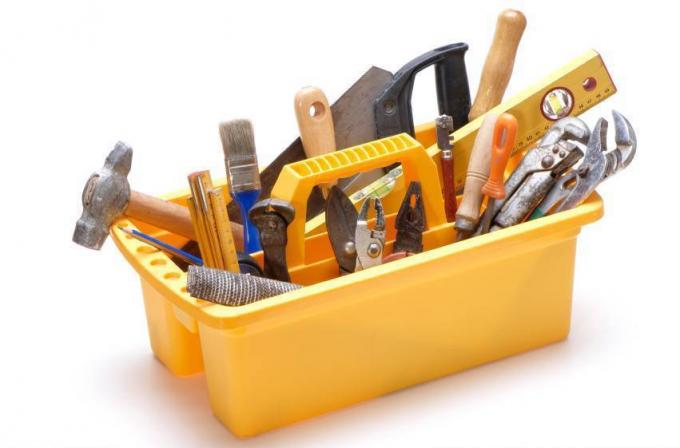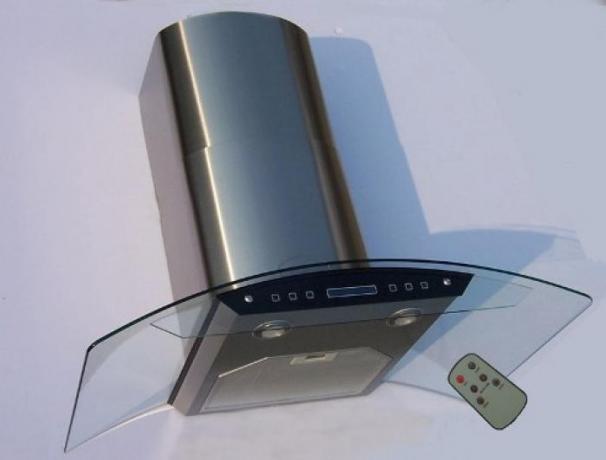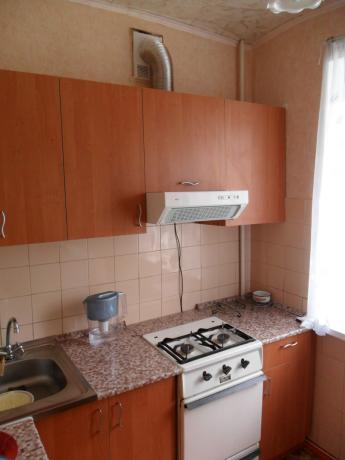Content
- 1 Five criteria for choosing a hood
-
2 Range of hoods for a private house
- 2.1 By the principle of work
- 2.2 By form
- 2.3 By mounting method
- 3 Types of air ducts
- 4 Conclusion
The hood in a private house is an important element of the kitchen space, which allows you to keep the air in the room fresh and clean. Accordingly, the purchase of such a device must be approached as carefully as possible and with all seriousness. To make the selection process easier for you, we will tell you about the criteria for choosing hoods and consider the models of structures that are suitable for installation in a private house.

The hood in the kitchen in a wooden house or in a brick building keeps the air clean and fresh
Five criteria for choosing a hood
Usually in a private home you have to cook quite often. That is why it is very important to choose the right hood that will effectively cope with the load. To do this, several important aspects should be taken into account, including the performance of the device, its size, noise level during operation and appearance.
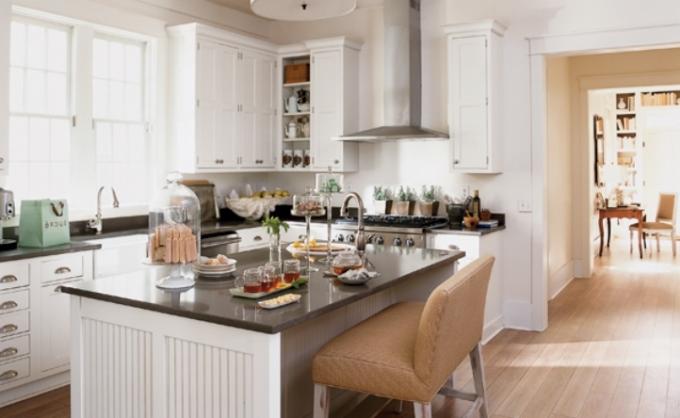
When choosing a device, you must take into account its power, dimensions, appearance and mounting method
- Criterion 1. Performance. This indicator means the volume of air that the device can clean in an hour. It is quite simple to correctly calculate the required power of the unit - you need to follow the formula.

The larger the room, the larger the hood should be in the kitchen in a private house
Multiply the area indicator of your kitchen by its height, multiply the resulting number by 12 (indicator air volume norms), and then multiply by 1.3 again (the approximate factor of the minimum stock).
- Criterion 2. Dimensions. There is one clear rule when choosing a hood - its dimensions should in no way be less than the width of the stove.
- Criterion 3. Noise level. This indicator may differ significantly for different models. We would recommend choosing designs whose noise level does not exceed 50-60 decibels.
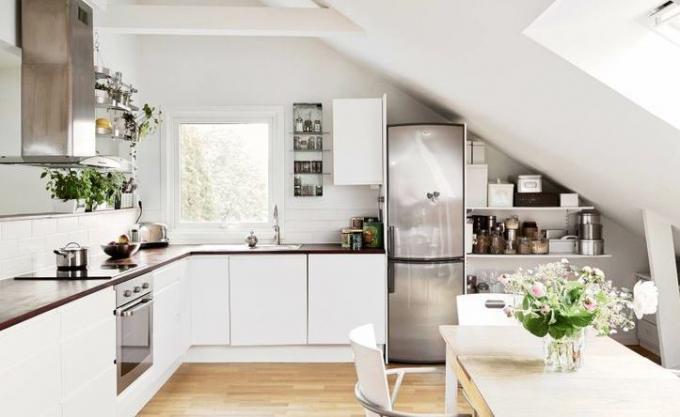
Models are considered the most comfortable if the noise level does not exceed 50-60 decibels.
- Criterion 4. Control mode and lighting. There are no strict criteria here - choose the model that suits your taste and budget.
- Criterion 5. Design. To keep the interior of your kitchen in a private house harmonious and thoughtful, choose a hood model that will organically fit into it. For example, designs with metal or glossy inserts will perfectly fit into a high-tech interior, dome models with a wooden finish will complement the classic or rustic style.

The device will fit into the interior as organically as possible if it matches the headset in color and materials
Range of hoods for a private house
Different manufacturers call these units differently: kitchen hoods, over-plate filters, air cleaners. However, in fact, we are talking about the same devices, the main purpose of which is to clean the kitchen air. With regard to the design features, the hoods can be divided into several groups, differing in shape, air purification method and mounting method. More about them.

The hoods differ among themselves in the principle of operation, forms and methods of fastening
By the principle of work
The operating principles of the hood are the starting point for installation, which is especially important for installation in private houses. For example, such buildings are often not equipped with a ventilation shaft. And in this case, you are faced with a choice: punch a hole in the wall for air exhaust and mount a full-fledged ventilation system, or leave everything as it is.

The photo shows the principle of operation of the flow (filter) and circulation (output) hood
The second option will help you save money both on the hood itself (this type of device is considered the most cheap) and during installation work (in this case, it is enough just to attach it to locker). In addition, this way you save not only money, but also time. Another question arises regarding the effectiveness of such a system, because the air is not removed from the room, but only circulates and is purified in it.
With regard to the specifics of the work, the hoods are divided into two types: filtering and exhausting.
- Filtering. A hood for a kitchen in a private house with a filter system is considered a budget option and is widely represented among suspended structures. Such models are suitable for old houses where it is not possible to install a ventilation system.
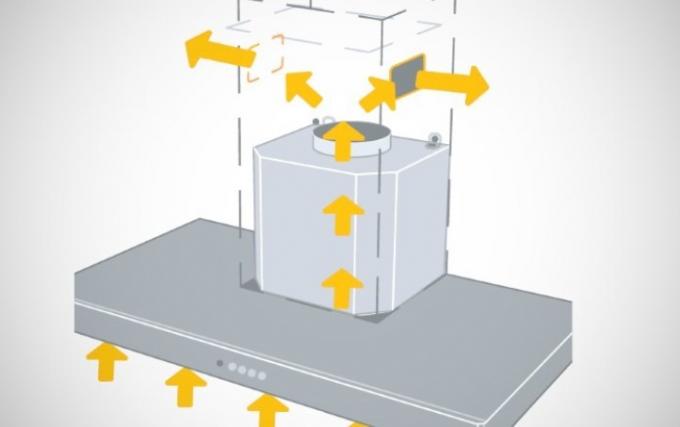
The operating instructions for filter structures assume regular replacement of cleaning filters
The principle of operation of such devices is extremely simple. So, all fats and food particles settle on the grease filter, while the final air purification is carried out by a charcoal filter. As a rule, such devices are equipped with a rather weak motor, which is quite enough for the stated purposes. Filters in most cases are not installed "for centuries" and require regular replacement.
- Outgoing. This type of hood requires a ventilation shaft. Naturally, the efficiency of devices that extract air from the room is higher than those that simply filter it. If you already have a ventilation duct, then it will not be difficult to install it yourself. If it is necessary to make a hole in the wall for ventilation, then it is better to contact a specialist.

Outputting models better relieve the kitchen of extraneous aromas
Such hoods do not have charcoal filters, since there is simply no need for them. Grease traps in these devices are installed reusable, and once a month they just need to be washed in soapy water.
By form
In general, three types of kitchen hoods can be distinguished, differing in shape: suspended, built-in and domed models. Each of them has its own characteristics.
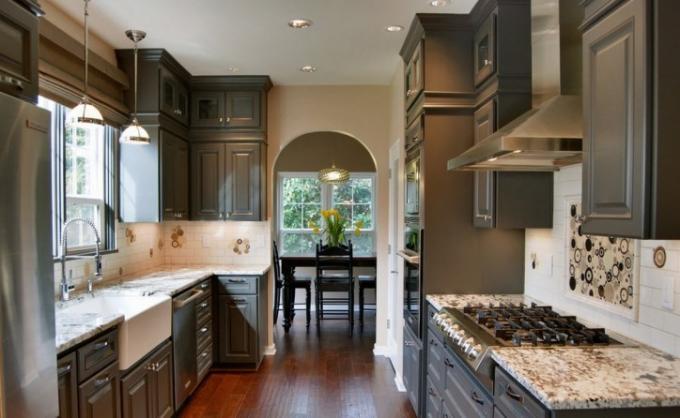
By the shape of the structure, they can be retractable, domed or built-in
- Suspended. Such devices are often referred to as “flat” because of their relatively small height and width. They are installed directly under the kitchen cabinet. At the same time, it is necessary to make sure that the lower part of the housing of the installed hood is in line with the neighboring cabinets. Most often, such models are attributed to the budget class, since they belong to the filtering designs, which we wrote about above.

Suspended models are compact in size, which allows them to be used in small kitchens
The main advantages suspended kitchen hoods is the price and ease of installation, because in this case there is no need for a ventilation shaft.
- Embedded. As a rule, such structures already require an air duct connection, because they operate in a flow-through mode. The installed hood is outwardly indistinguishable from the suspended one, since its main part is hidden by the cabinet. Only the intake part of the device remains visible, which can be increased by extending.
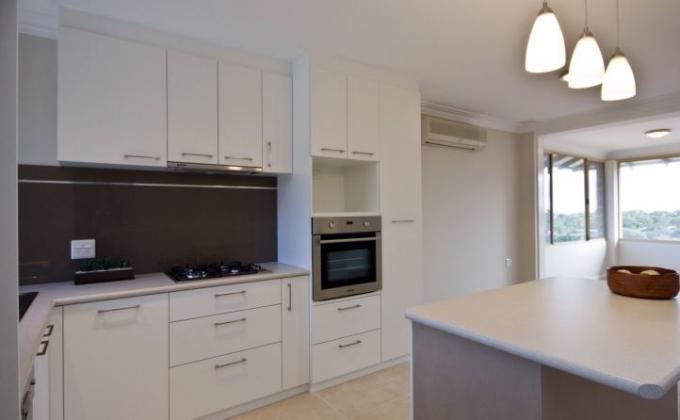
The built-in device is hidden in the upper cabinet of the headset and is almost invisible
- Fireplace or dome. They are considered the most demanded in the modern market. Most likely, the reason for this is the variety of forms and finishing materials. So, there are often wooden and plastic inserts that add sophistication to such devices. With a striking design and expensive finishes, domed kitchen hoods often become central elements of kitchen interiors.

Fireplace hoods are widely used in kitchens with classic or rustic interiors.
These devices got their name due to the similarity with the chimney exhaust system, which is why such a hood in the kitchen in a private house will look especially harmonious.
When choosing hoods, pay attention to those devices that are equipped with powerful motors, have two fans and a large margin of performance. Typically, such devices are less noisy and more efficient.

For a spacious kitchen, it is better to choose a device with two motors
By mounting method
According to this parameter, all hoods can also be divided into three groups: wall, island and corner.
- Wall mounted. They have one flat side for easy wall mounting. This is the most traditional type of hood. Such devices can have both a horizontal arrangement and an inclined intake part, which somewhat increases the working area and eliminates the risk of head hitting the body.
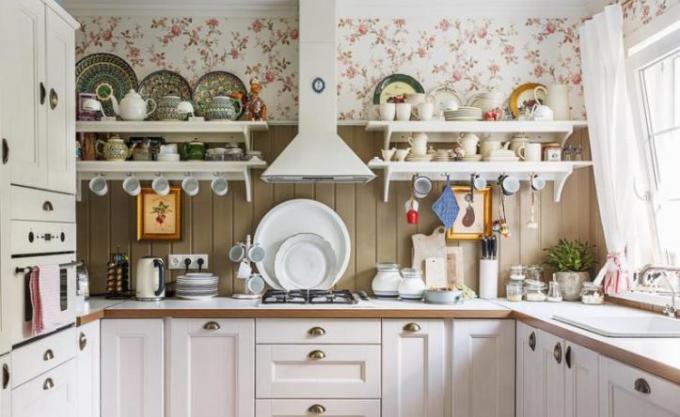
Wall-mounted structures - the most common type of hood, characterized by ease of installation
- Island. The design of such hoods allows them to be located absolutely in any part of the kitchen. As a rule, they are purchased by the owners of private houses with spacious kitchens, where the hob is located not against the wall, but closer to the center of the room. In most cases, these models have a vertical duct and ceiling mount.

The island design is used if the kitchen has an island with a hob
All island kitchen hoods types belong to the "luxury" class, and therefore are always equipped with electronic control, are characterized by high performance and are not cheap.
- Corner. The main difference between corner hoods lies in the specific design of the case, which makes it most convenient to install such a device in the corner of the room. As a rule, the motivation for purchasing this type of hoods is more of a forced measure than a design move. In view of this, the range of such products is not great.

Corner models effectively use empty space in the corner of the room
Types of air ducts
Pipes for arranging the air duct are of three types: round or rectangular plastic, or corrugated.
Illustration |
Description |
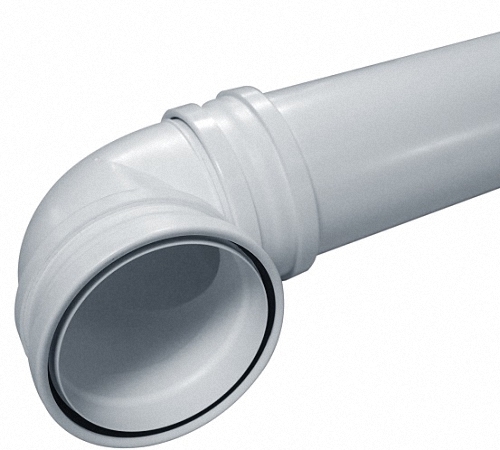 |
Round. It is considered ideal for any type of hood as it creates the least resistance. |
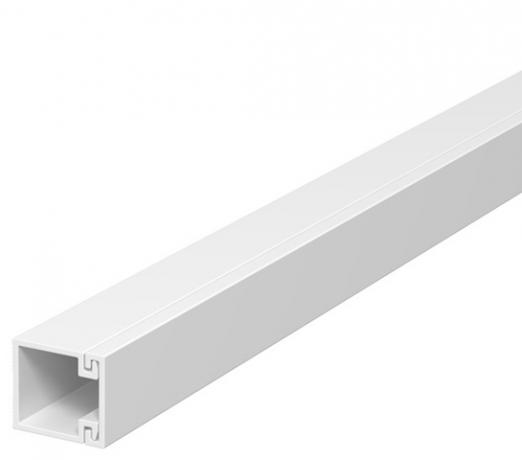 |
Rectangular. Creates slightly more resistance than round, since the exhaust outlet is usually round in shape, and in this case a small air sill is created. |
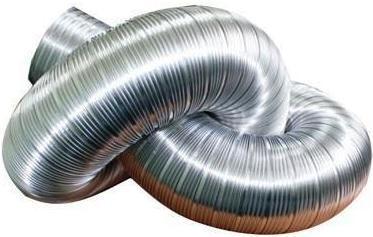 |
Flexible. It is characterized by the highest air resistance, which arises from an uneven corrugated surface. Also, the corrugation creates a certain noise during the operation of the hood. However, they are the only option if the channel turns several times in a short section. Due to their structure, air ducts of this type are stretched as much as possible during installation in order to minimize folds, and, accordingly, resistance. |
Try to locate a wall vent directly above the hood, as every 90 degree corner of the duct reduces ventilation efficiency by 10%.
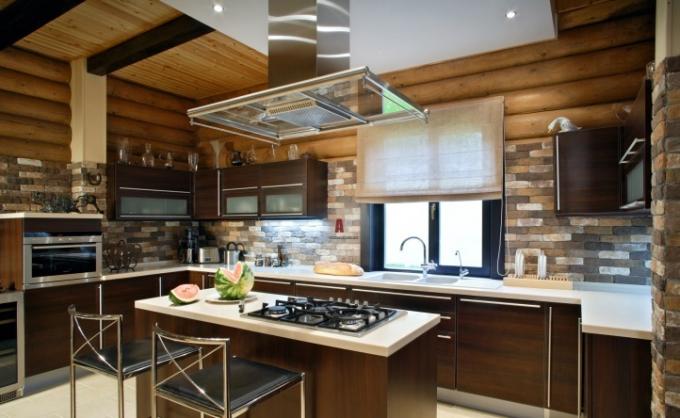
Try to position the ventilation hole above the hood. Any bend in the air duct subtracts 10% of the unit's performance
In order to give the kitchen an aesthetic look, you can “hide” ventilation pipes behind cabinets or lay them at the junction of the wall and ceiling. However, the smaller the distance between the ventilation hole in the step and the hood, the better. You will learn how to install the hood from the proposed video.
See also: How to connect a hood in the kitchen
Conclusion
We examined the main models of hoods that are suitable for a private house, and the criteria that they must meet. After reviewing this information, you can purchase the most effective model for your home, which will serve you for more than one year.
